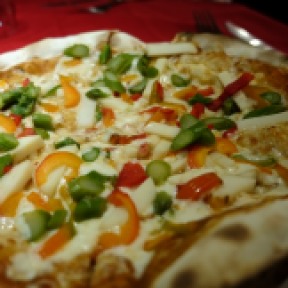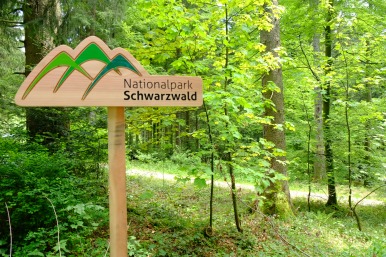This is more than a year over due. Might seem like a random discontinuous series of words but really it is the last of my Chile and Bolivia travelogue and should be read in continuum with my other Sud America stories. I had to refer back to my little book in which I diligently make travel notes to see if I had missed anything. That is my post Fellowship exam year brain. 2017. What a year! I could have spent the entire time blogging about world and local politics but am grateful I was bound to work and studies. The journey to this point has been tumultuous; a story I shall tell one day and name names, those who bullied me in the hospital, made unilateral decisions about my career and values, mediocre registrars and consultants. That is why it was important for me to be focussed and get through the year. Promises I made to myself and to my teachers who believed in me. I have left this blog verbatim from when I first wrote it and added the last bit only.
The highest capital in the world! I shared a taxi from El Alto into La Paz where I had booked my airbnb for the my final leg in Bolivia. I was going to be town! My companion was an Australian woman on a prolonged OE and we talked about Australian politics, as you do. Tony Abbott, Kevin Rudd, Julia Gillard, Australia’s terrible handling of their refugees on Nauru…all favourite Leftie topics of conversation. I invariably meet such Aussies on my trips. There was this couple in Samoa who also lived near Shepparton, Victoria, where my sister lived at that time, and they were rabid Tony Abbott haters. So much so they scared an American couple at the same hotel who, being Americans, had no clue of any other democratic system. Yeah. So this woman gave me a copy of Marching Powder and said I must read it. All about cocaine and crims in San Pedro prison, La Paz. Then she left me to go her way.
La Paz is a difficult city. I have never seen such traffic! Not in Bombay, not in Auckland, Tokyo or anywhere else. Narrow one way streets, people in queue for private buses, for taxis. Seemed like an eternity to get from Plaza De San Pedro to wherever. Same distance I covered in less than 30 minutes walking one way.
I reached my airbnb, dumped my gear in my room and went looking for food. I found a shopping mall right next door. Hang out of the Bolivian middle class. Shops, food court, multiplex. Even Hello Kitty ice cream!

The burger and Fanta I ate almost made me throw up. My body is not used to aerated sugary drinks and that combo was poison but the hungry can’t be choosy. Sometimes lionesses have to eat hay.
There are three amazing things to do in La Paz in a short time. Not in any specific order this.
Visit the Church of San Francisco. An impressive structure in Plaza Mayor, a public square witness to constant transient crowds and traffic. Akin to the Strasbourg Cathedral in Place du Chateau. Both Catholic buildings but San Francisco not the slightest intimidating or ugly. Watch the faithful, see blue Jesus on the museum wall, climb up the steeple then wander out to Mercado Lanza and have fruit salad and ice cream like the locals. Don’t forget to check out the dvd stalls. Asian cinema is big in Bolivia.
Do a walking tour with the Red Caps. This is a bunch of enthusiastic La Paz locals who will take you through the food market, the Witches Market, Bolivian government buildings and finish in a bar. They have wicked sense of humour and tell a lot of jokes about Evo Morales. I was the only person of colour on the walk. An American-Chinese couple at the airbnb had warned me about the ‘ignorant Australians’ (surprise, not) on these walks. When we reached the Witches Market the boys made us sit on the street and told us a story about human sacrifice, to be careful of going out alone at night and the horrified ‘oh-my-lord-these-dark-uncivilised-barbarians’ look on the faces of the goras, the Americans and Australians was worth more than a million dollars. It was hard to keep a straight face. The Red Caps paused, looked around and snorted. ‘Oh you all got scared’! Then there was this story about Evo Morales telling Bolivian women they should keep their virginity until they got married. Those women, they came out on the streets telling him to mind his own business! He backtracked and said Bolivian women were the flowers of Bolivia. Of course they tell it better than I can. 🙂
The third thing to do in La Paz is to take the cable cars. Mi Teleferico. It is a great way to see La Paz. Locals told me it was a cheap mode of transport for all those who commuted great distances to get to and from work in this difficult, mountainous city. ‘It creates equality.’
A well travelled friend once told me that the poverty in India is different from the poverty in South America. I think the poverty in developing countries, invaded and colonised by Westerners, their cultures and indigenous ways destroyed, is the same and different from poverty in New Zealand and Australia. Or Europe and UK. (Can’t comment on America, never been.) There should not be homeless, hungry people in the Western world at all. There is enough wealth to provide basic amenities for everyone. But, greed. How to alleviate poverty in the post-colonial world? That is a difficult, complex process. (In my head anyway.)
So in that quest, I travel. Trying to connect the dots, connect humanity, find my place in the universe. I’ll go to South America again but I want to go to Africa first. Morocco. With a trip back to India. Maybe Korea or Taiwan in-between? Japan, beyond Tokyo again.
PS. My photos from Bolivia on flickr




























 That I did not speak Español or that Bolivia had/has the reputation of being dangerous did not deter me one bit.
That I did not speak Español or that Bolivia had/has the reputation of being dangerous did not deter me one bit. 




 Moving gear at night, searching for a place to park, I almost did not notice the three young sex workers at the entrance of the building. Very young and one very pregnant, all of African origin. Before that, as we stopped at a set of lights, there stood a beautiful, slender woman. Only in her shirt it seemed. I looked closer. Was this a new French fashion? No she wore nude stockings under her shirt, appearing nonchalant on the street. Seeking business. My middle class bleeding heart cannot fathom what compels a woman to be in this industry. A very difficult life with no light, no love, and … I can imagine as I wish but it is not so simple is it?
Moving gear at night, searching for a place to park, I almost did not notice the three young sex workers at the entrance of the building. Very young and one very pregnant, all of African origin. Before that, as we stopped at a set of lights, there stood a beautiful, slender woman. Only in her shirt it seemed. I looked closer. Was this a new French fashion? No she wore nude stockings under her shirt, appearing nonchalant on the street. Seeking business. My middle class bleeding heart cannot fathom what compels a woman to be in this industry. A very difficult life with no light, no love, and … I can imagine as I wish but it is not so simple is it?


















